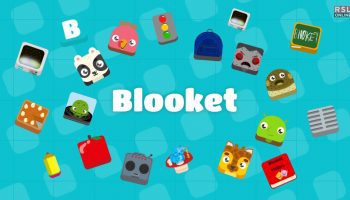Coding education is a critical element of empowerment and progress in a world where technology continues to reshape every aspect of our lives. Yet, despite the vast potential for innovation and creativity, the tech industry still grapples with a significant challenge: a lack of diversity and inclusion.
Besides, this doesn’t just narrow the talent pool. Furthermore, it limits the scope of problems that technology can solve. As educators, mentors, and advocates for change, we carry the torch that can light the way for a more diverse future in tech.
In this article, we’ll explore the steps and strategies necessary to foster a learning environment where all individuals, irrespective of their background, can have equal access to the tools and opportunities in coding education. By embracing these practices, we can help to build a more inclusive and diverse technological landscape. You can view website for additional info too.
Understanding The Landscape
Before we delve into the strategies to promote diversity and inclusion, we must grasp the current landscape of coding education.
Coding education is no longer a niche field reserved for a select few; it has become a foundational skill that everyone should have the opportunity to learn. However, certain groups, including women, people of color, and those from lower socioeconomic backgrounds, are underrepresented in this area. Furthermore, this discrepancy stems from various factors, including socioeconomic barriers, lack of representation, and preconceived notions about who is ‘suited’ for a tech career.
In the pursuit of diversity and inclusion in coding education, resources that cater to a variety of educational needs are essential. Grabmyessay.com can be particularly useful for students who are looking to pay for personalized tutoring or essay writing services that can help them excel in their coding courses.
Assessing Your Current Coding Program
It is crucial to start by evaluating how inclusive your current coding program is.
- Review Enrollment and Retention Data: Firstly, look at who is enrolling in your programs and, more importantly, who stays. This data can provide insights into potential barriers specific groups might face.
- Solicit Feedback: Gather feedback from current and past students about their experiences. Are there systemic issues that need to be addressed?
- Analyze Curriculum Content: Lastly, ensure that your curriculum is not only accessible but also relatable to a diverse set of students.
Developing An Inclusive Curriculum
A curriculum that speaks to a diverse audience inspires all students to learn and create.
When developing an inclusive curriculum, it’s essential to integrate culturally relevant examples and showcase contributions from diverse figures in tech. Besides, this not only enriches the learning experience but also helps students from underrepresented groups see themselves in the field.

Strategies For Inclusive Coding Education
To truly champion diversity and inclusion in coding education, we must be intentional in our approach. Here are several strategies that can make a difference:
1. Create Accessible Learning Materials
- Use Clear, Jargon-Free Language: Ensure your materials are understandable to beginners from all backgrounds.
- Provide Various Learning Resources: Offer materials in different formats (videos, texts, infographics) to cater to different learning styles.
2. Offer Scholarships and Financial Aid
- Reduce Financial Barriers: Implement scholarships and financial aids tailored for underrepresented groups.
- Partner with Organizations: Collaborate with companies and non-profits that support diversity in tech to fund these initiatives.
3. Foster a Supportive Community
- Build Mentorship Programs: Pair learners with mentors who can offer guidance, support, and a sense of belonging.
- Encourage Peer Networks: Create spaces where students can collaborate and support each other’s learning journeys.
4. Prioritize Representation
- Diverse Instructors and Leaders: Staff your program with educators who reflect the diversity of the student population.
- Guest Speakers and Role Models: Invite professionals from diverse backgrounds to share their experiences and insights.
5. Continual Learning for Educators
- Professional Development: Offer training for educators to understand bias, microaggressions, and how to create inclusive classrooms.
- Cultural Competence: Encourage educators to learn about different cultures and perspectives to relate better to their students.
6. Implement Inclusive Policies and Practices
- Anti-Discrimination Policies: Have clear policies that promote respect and equal treatment for all students.
- Regular Program Reviews: Continuously review and update your programs to ensure they meet the evolving needs of a diverse student body.
7. Encourage Exploration and Creativity
- Project-Based Learning: Use real-world problems that resonate with diverse groups to encourage creativity and practical learning.
- Hackathons and Competitions: Organize inclusive events and celebrate diverse perspectives in problem-solving.
Measuring Success In Diversity And Inclusion Efforts
It’s not enough to implement these strategies; success lies in the ability to measure their impact.
To gauge the effectiveness of diversity and inclusion initiatives, regular assessment through surveys, retention rates, and student success stories is key. Furthermore, these metrics not only help in understanding what works but also highlight areas that require more attention.
Challenges And Opportunities
Embracing diversity in coding education is not without its challenges. Resistance to change, limited resources, and deep-seated biases can be significant hurdles. Yet, these challenges also present opportunities for innovation, growth, and the chance to lead by example in creating a more inclusive tech industry.
Conclusion
Promoting diversity and inclusion in coding education is vital to building a tech industry that truly reflects the world it serves. By recognizing the importance of representation, supporting various learning styles, and committing to continuous improvement, educators can create a fertile ground for all students to thrive. It’s a journey of many steps, but each brings us closer to a future where the many, not the few, wield the power of technology.
The path to diversity and inclusion in tech begins with education, and the impact of our efforts will resonate for generations to come. Let’s take these steps together, building a more inclusive world, one coder at a time.
Read Also:




























